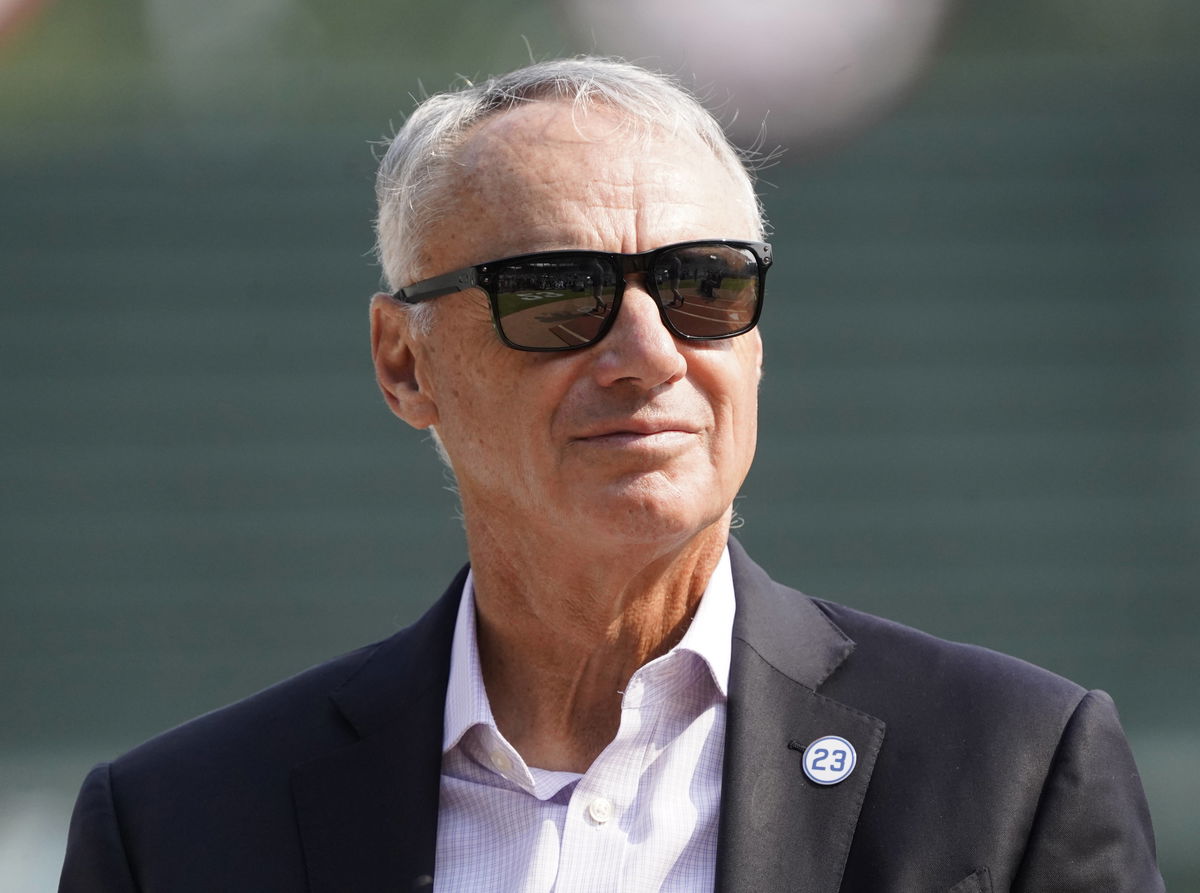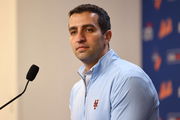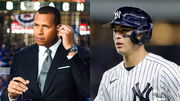
Imago
MLB, Baseball Herren, USA Chicago Cubs press conference, PK, Pressekonferenz Aug 1, 2025 Chicago, IL, USA Baseball Commissioner Rob Manfred announces Major League Baseball and the Chicago Cubs will host the 2027 All Star game at Wrigley Field. Chicago Wrigley Field IL USA, EDITORIAL USE ONLY PUBLICATIONxINxGERxSUIxAUTxONLY Copyright: xDavidxBanksx 20250802_cec_bb6_001

Imago
MLB, Baseball Herren, USA Chicago Cubs press conference, PK, Pressekonferenz Aug 1, 2025 Chicago, IL, USA Baseball Commissioner Rob Manfred announces Major League Baseball and the Chicago Cubs will host the 2027 All Star game at Wrigley Field. Chicago Wrigley Field IL USA, EDITORIAL USE ONLY PUBLICATIONxINxGERxSUIxAUTxONLY Copyright: xDavidxBanksx 20250802_cec_bb6_001
It started with a groan. It wasn’t the batter or the pitcher who’d made the sound, but 40,000 fans packed into Oracle Park. The game was neck and neck, with the Giants holding on to a 3-2 lead at the top of the seventh with two outs. Logan Webb delivered a 1-1 sinker that caught the edge of the strike zone, a perfect pitch. Except David Rackley didn’t see it that way. “Ball two,” he called. Cubs shortstop Dansby Swanson didn’t argue. He didn’t need to. He had just been handed another chance, and moments later, Chicago capitalized. A missed third strike ballooned into a two-run inning. That pitch may not show up in the box score, but it flipped the game, and possibly the Wild Card race.
Watch What’s Trending Now!
The numbers after the game told an even uglier story. Rackley missed 16 total calls, finishing with a correct call rate of just 86.4%, per Umpire Auditor. For context, MLB umpires average around 93% accuracy per game. Rackley’s performance ranks in the league’s bottom percentile for the season. These aren’t just isolated misses; they’re systemic failures. That one game saw a full inning’s worth of calls go wrong. That’s not a rough day. That’s a tipping point.
This isn’t just about one umpire, one call, or one game. It’s about a sport that’s increasingly letting a 60-year-old with no accountability determine outcomes at 95 MPH. Giants fans didn’t just lose their minds; they may have watched their playoff hopes wobble. The Cubs walked away with a 5–3 win, and for both clubs, those two runs could loom large in a September standings crunch.
ADVERTISEMENT
Umpire David Rackley called the worst game of the day.
He missed 16 calls in the Giants Cubs game for a correct call rate of only 86.4%. pic.twitter.com/YBsUZv9pPI
— Umpire Auditor (@UmpireAuditor) August 29, 2025
The conversation now shifts from dugouts to the commissioner’s office. Rob Manfred, long reluctant to touch the “robot ump” debate, is now reportedly preparing a “strike zone challenge system” for 2026. Think of it like tennis: managers would be granted a limited number of challenges on ball-strike calls per game. If successful, they keep it. If not, they lose one. It’s not a fully automated zone, but insiders call it a “transitional fix,” a halfway house between human tradition and technological precision.
It’s no secret Manfred has been watching the minor leagues closely. The ABS (Automated Ball-Strike) system, tested in Triple-A this year, showed a reduction in umpire error by 7–9%, with players reporting more consistent strike zones and fewer arguments. And frankly, fans are starting to warm to it. After Rackley’s meltdown, “robo umps” trended nationally for six hours.
ADVERTISEMENT
The truth is, the league doesn’t need perfect umpires. But it needs better ones. When a single official becomes the storyline in a game full of stars, that’s not just bad optics, it’s bad business.
ADVERTISEMENT
Historical echoes: Bad calls that changed seasons
Pitching a perfect inning is hard. Pitching an immaculate inning, three strikeouts on nine pitches, is even harder. But what if one pitch that clearly struck the zone was called a ball? That’s exactly what happened to Dodgers ace Yoshinobu Yamamoto. On June 19, 2025, he was one swing away from baseball glory when umpire Marvin Hudson blew the call. Broadcasters went ballistic, calling it “not even close,” and instantly renewing calls for tech to save the day. That tiny misjudgment didn’t just cost a rare feat; it reshaped the narrative of the game.
Fast-forward to July, and Braves fans got their own taste of outrage. In the ninth inning of a gut-punch 2025 loss, home-plate umpire Jansen Visconti rang a slider clearly out of the zone as a game-ending strike three. Atlanta broadcasters, livid, demanded an Automated Ball-Strike system on air. That one missed call sealed another loss and amplified talk of systemic failure, because when the zone breaks down, momentum dies on the mound.
Top Stories
Blue Jays in Real Trouble as Two AL Rivals Go All-In on $116M Trade Target Amid Bo Bichette Uncertainty

David Stearns’ Mets Job Hangs by a Thread as New York Calls End to “Love Affair,” Claims Insider

Alex Rodriguez Feels Anthony Volpe’s Struggles Are Result of Yankees’ “Broken” Hitting Philosophy

Kyle Tucker’s Controversial Call Draws Scrutiny as Grim Free Agency Update Emerges, Per Top Insider

Francisco Lindor’s Future in Limbo as Mets Owner Breaks Silence After Pete Alonso Exit

Baseball isn’t the same game it once was. Fans aren’t just armchair analysts; they’re armed with strike-zone apps and pitch-tracking feeds. Many spot mistakes faster than umpires raise their gloves. One wrong call hits harder when everyone, and I mean everyone, sees it unfolding in real time. The very technology that shows you who’s wrong can’t yet fix it once it’s blown. Missed calls now live forever, not just in memory but on our screens. The margin for error? Shrinking fast.
ADVERTISEMENT
ADVERTISEMENT
ADVERTISEMENT
ADVERTISEMENT

